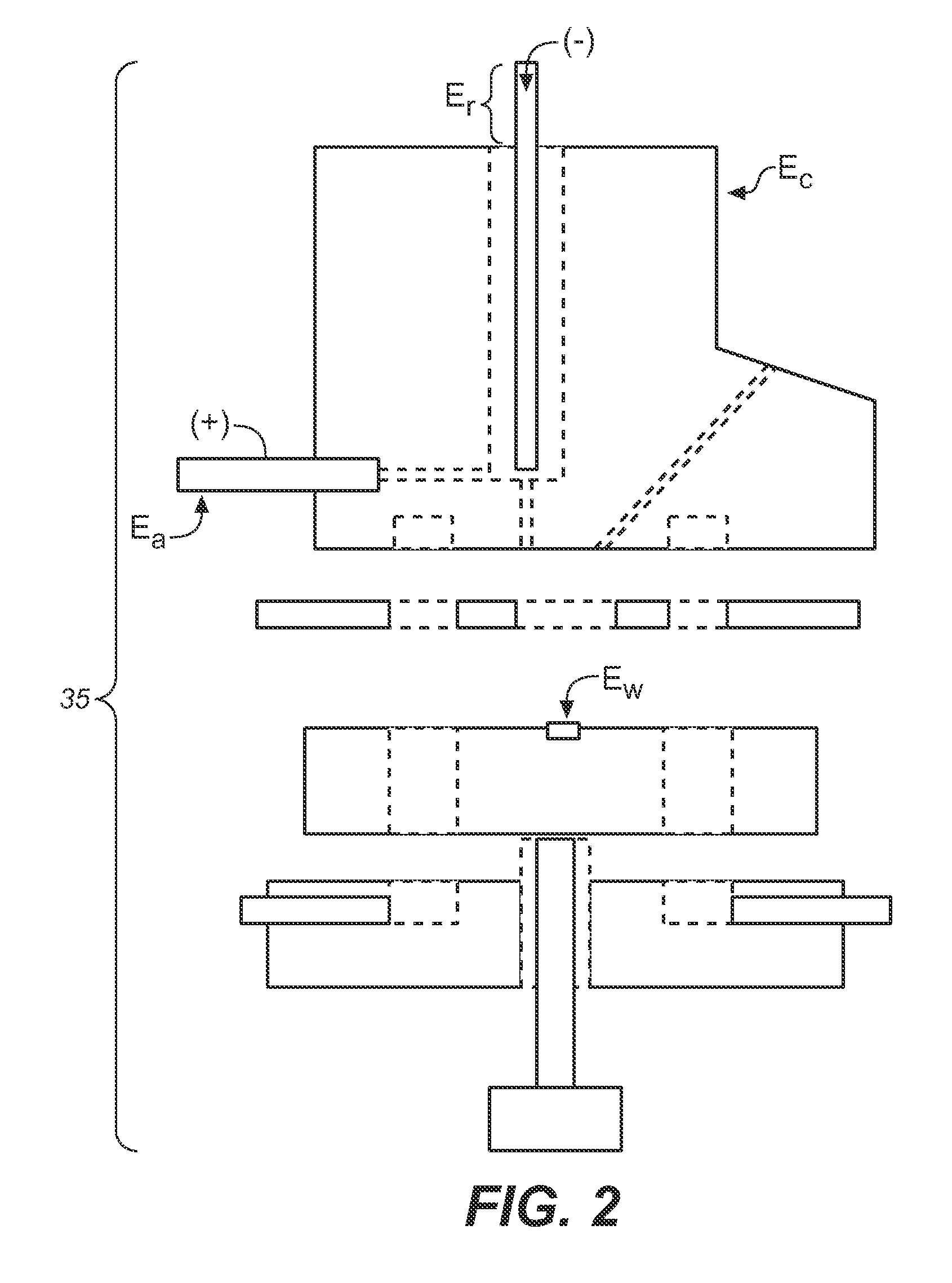Analytic Device With PhotoVoltaic Power Source
a photovoltaic power source and analytic device technology, applied in measurement devices, scientific instruments, instruments, etc., can solve problems such as drastic performance errors, difficult to produce based on primary system power, and inability to monitor
- Summary
- Abstract
- Description
- Claims
- Application Information
AI Technical Summary
Benefits of technology
Problems solved by technology
Method used
Image
Examples
example 1
[0085]A power source in accordance with the above was implemented and tested as a biasing power supply for a Pt—Pd electrode in the ED module of an ICS-5000 DC system. The power supply was about 1.5 V to about 2.2 V, and generally about 2 V. The system was operated at 25 degrees Celsius.
[0086]The PV cell output was regulated down with a linear voltage regulator to maintain a stable level of about 1.6 V. The power source was enabled / disabled by means of switching the LED current on and off. The secondary (output) circuit of the PV cell together with the regulator was floating and referenced to the high impedance ED cell output signal.
[0087]The output voltage from the optical coupler was found to have excellent noise performance. This is believed to be due in large part to the DC principle of operation of the optical coupler and good primary to secondary separation. The power source was thus found to provide fixed and sustainable power to the sensor with minimal noise.
PUM
 Login to View More
Login to View More Abstract
Description
Claims
Application Information
 Login to View More
Login to View More - R&D
- Intellectual Property
- Life Sciences
- Materials
- Tech Scout
- Unparalleled Data Quality
- Higher Quality Content
- 60% Fewer Hallucinations
Browse by: Latest US Patents, China's latest patents, Technical Efficacy Thesaurus, Application Domain, Technology Topic, Popular Technical Reports.
© 2025 PatSnap. All rights reserved.Legal|Privacy policy|Modern Slavery Act Transparency Statement|Sitemap|About US| Contact US: help@patsnap.com



